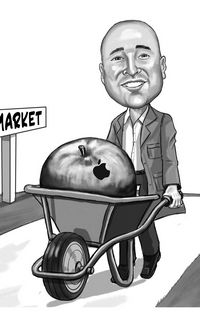Leveraging innovation
A record-breaking 2013 meant only the most innovative houses could keep up with the pace in an increasingly diverse high-yield market. One bank was able to excel in every area. For being as comfortable pricing the largest PIK toggle ever as the most leveraged LBOs of the year, Deutsche Bank is IFR’s EMEA High-Yield Bond House of the Year.
European high-yield grabbed the headlines with unprecedented volumes this awards year, with €75bn of non-dollar high-yield bonds sold by November 15. But volumes alone fail to explain why 2013 will be remembered as the year the market reached maturity.
For a start, more than a third of the many European deals came from debut issuers, bringing much-needed diversification to a market once dominated by narrow sectors such as cable. These companies, previously reliant on bank debt, required innovative thinking for their capital market debuts.
High-yield provided a lifeline for companies that had never previously considered bond finance, particularly in peripheral Europe where bank liquidity was thinnest. This wave of companies refinancing bank debt meant an increase in supply, but event-driven trades were still few and far between. As a result, competition for M&A was arguably fiercer than ever.
Goldman Sachs and JP Morgan drove much of the year’s innovation, gracing the top line of the year’s trickiest deals. A number of banks channelled demand for peripheral credits, particularly HSBC and Citigroup, which brought Greek firms to market at yields that were unimaginable last year. Finally, Credit Suisse was one of the few houses to hog the M&A limelight, left-leading the monster Virgin Media buyout as comfortably as Italian LBOs Cerved and Rhiag.
But only one house managed to pull all these strands together, while executing the most highly leveraged deals: Deutsche Bank.
The high-yield stalwart led the first PIK toggle in European currencies in March, for CVC-owned telecoms firm Sunrise, dropping a planned dollar tranche to fund the full amount in euro and Swiss francs.
“A lot of people thought we were crazy for trying to do a Swiss franc PIK toggle, and it hasn’t been repeated,” said Henrik Johnsson, head of EMEA high-yield and loan capital markets.
This kicked off a wave of European PIK toggles, and Deutsche perfected the format with the enormous Schaeffler deal in July. The trade was not only the largest publicly sold PIK toggle bond in history – at a whopping €1.5bn-equivalent – but it priced at the instrument’s lowest ever yields.
Deutsche Bank’s ability to achieve surprisingly low coupons was also seen in the periphery. Although Spanish issuer Gestamp is in the cyclical automotive sector, Deutsche was still able to push yields on both its euro and dollar tranches below 6%.
Channelling US demand was key – a technique the bank also used for purely euro trades such as CeramTec.
“CeramTec was spun out of US chemicals group Rockwood, so we knew that many US investors understood the credit,” said Jane Bushey, director, high-yield capital markets at Deutsche Bank. “Knowing US demand was there was the key to getting such a tight yield on a deal that many thought was too highly levered to succeed.”
Deutsche wrapped up the seven times leveraged LBO with ease, in the same week that underwriters of another German LBO – Springer Science – had to sell it at a steep discount.
CeramTec was not the highest leveraged LBO of the year; that title goes to another Deutsche deal: the 7.2 times leveraged Ista. Deutsche had to underwrite the deal in a matter of days, following CVC’s last-minute decision to increase its stake in the business.
Ista was a hot credit sold into an even hotter market, but just how far Deutsche Bank drove in pricing surprised many: 6.875% for the senior subordinated notes and 5% flat for the senior secured notes.
Deutsche was equally adept at selling difficult deals in tough markets. It led The AA’s £655m Class B notes, the largest sterling high-yield tranche from a debut issuer ever. The German bank priced the deal as June’s “taper tantrums” roiled the market, with two deals having already been pulled that month, one just four days before.
“After it priced everyone said, ‘Well the deal was never in doubt.’ The fact people thought that, is a testament to how well we managed such a difficult situation,” said Johnsson.
The deal was crucial in proving that the high-yield market was still open. Deutsche took The AA even further just four months later, boosting leverage to a whopping 8.1 times with the year’s highest leveraged PIK toggle deal, which printed in line with where the Class B notes priced.
To see the full digital edition of the IFR Review of the Year, please click here.
To purchase printed copies or a PDF of this report, please email gloria.balbastro@thomsonreuters.com


